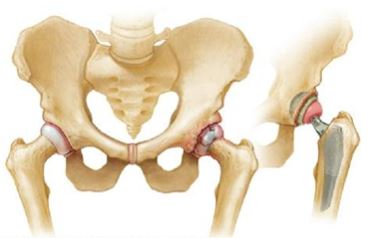Treating Hip Conditions Surgical Options
Depending on the severity of the hip condition, it may range from a minor injury to chronic pain and limited mobility. There are a variety of options available for the treatment of hip conditions at SJMC's Orthopaedics Department, such as:
Total Hip Replacement
Total hip replacement, also known as total hip arthroplasty, is a surgical procedure that involves replacing the damaged parts of the hip joint with artificial implants. It may be recommended for people with severe hip osteoarthritis or other degenerative conditions that cause chronic pain and limited mobility.

Hip Arthroscopy
Hip arthroscopy is a minimally invasive surgical procedure that involves inserting a small camera into the hip joint to diagnose and treat problems. It can be used to remove loose pieces of bone or cartilage, repair torn ligaments or tendons, or smooth rough surfaces.
Hemiarthroplasty
Hemiarthroplasty is a surgical procedure that involves replacing only the damaged portion of the hip joint with an artificial implant. It may be recommended for people with fractures or other injuries that affect only one side of the hip joint.
Fracture Fixation
Surgical treatment may be necessary to align the bones correctly and promote healing if you have a fractured hip. There are several techniques that may be used, including:
- Closed reduction: This procedure is used to reposition the bones into proper alignment without incision.
- Open reduction: This procedure involves making an incision in the skin to reposition the bones.
- Plate and screw fixation: This procedure involves using metal plates and screws to hold the bones in place while they heal.
Robotic Hip Replacement & Revision
Robotic hip replacement and revision surgery involve the use of a robotic system to assist with the placement of artificial hip implants. The system allows the surgeon to make precise movements and minimise the risk of implant dislocation. It may be used in primary hip replacement surgery or revision surgery to replace or repair a previous hip replacement.
As a result, it is pertinent to point out that surgical treatment can be an effective option for certain hip conditions. In the event that you are suffering from a hip condition that fails to respond to non-surgical treatment, we invite you to visit our hospital's Orthopaedic & Spine department to receive more information about your surgical options if you are not responding to non-surgical treatment.

